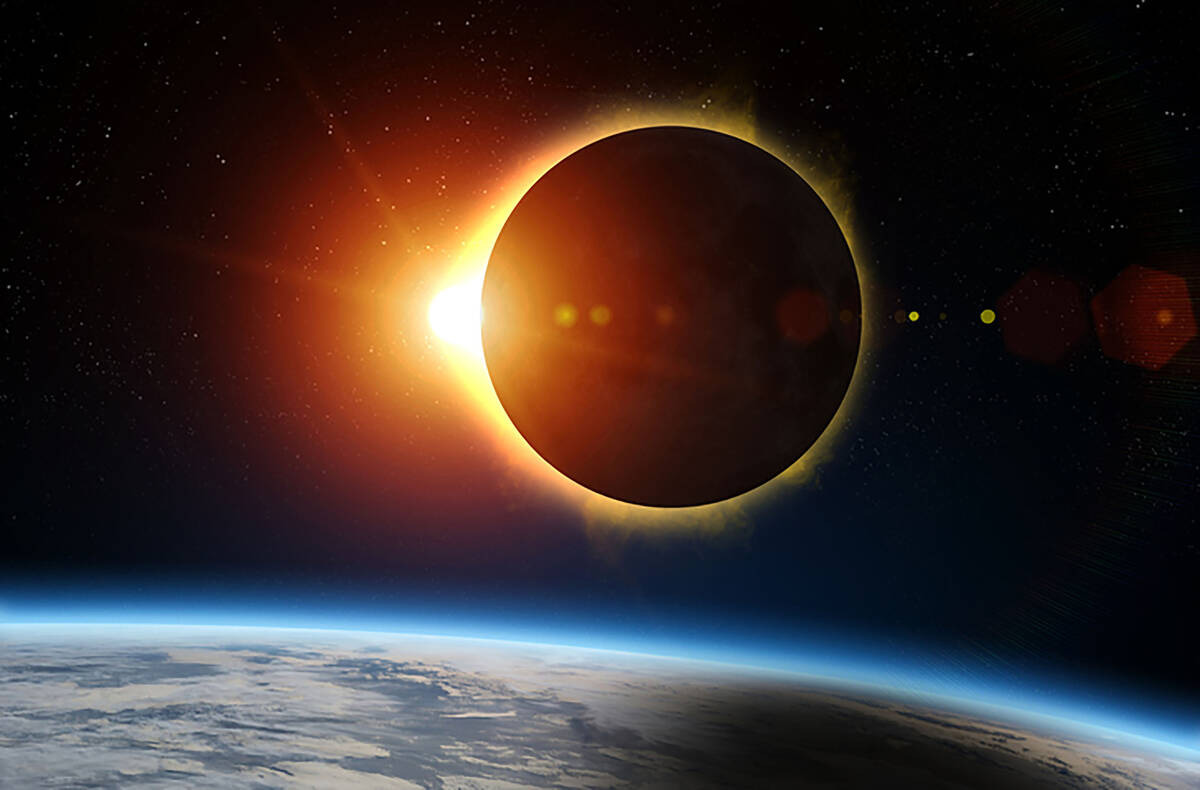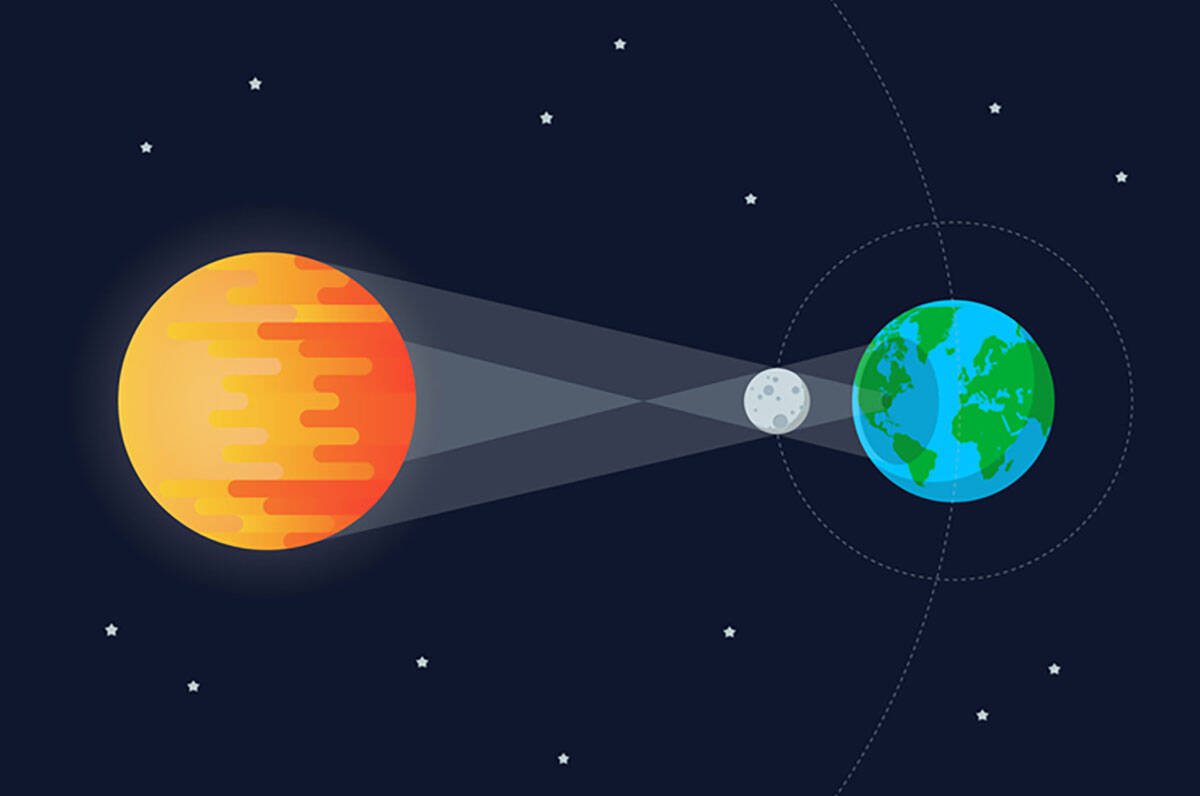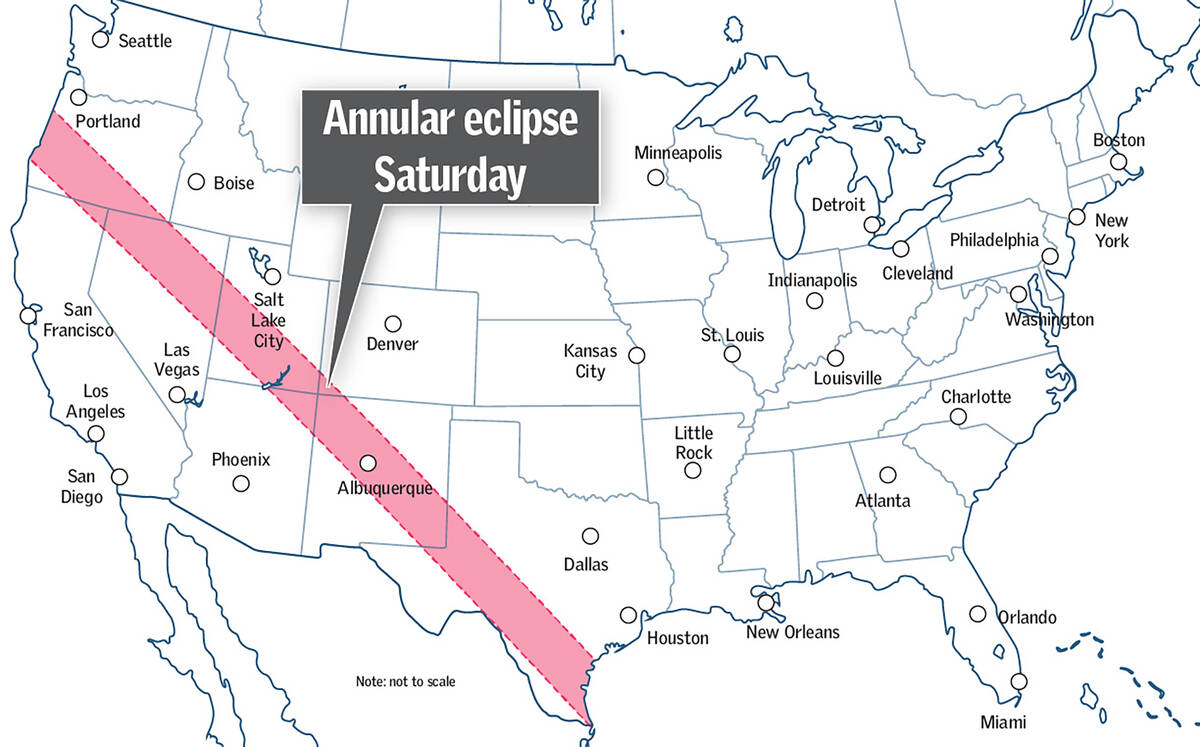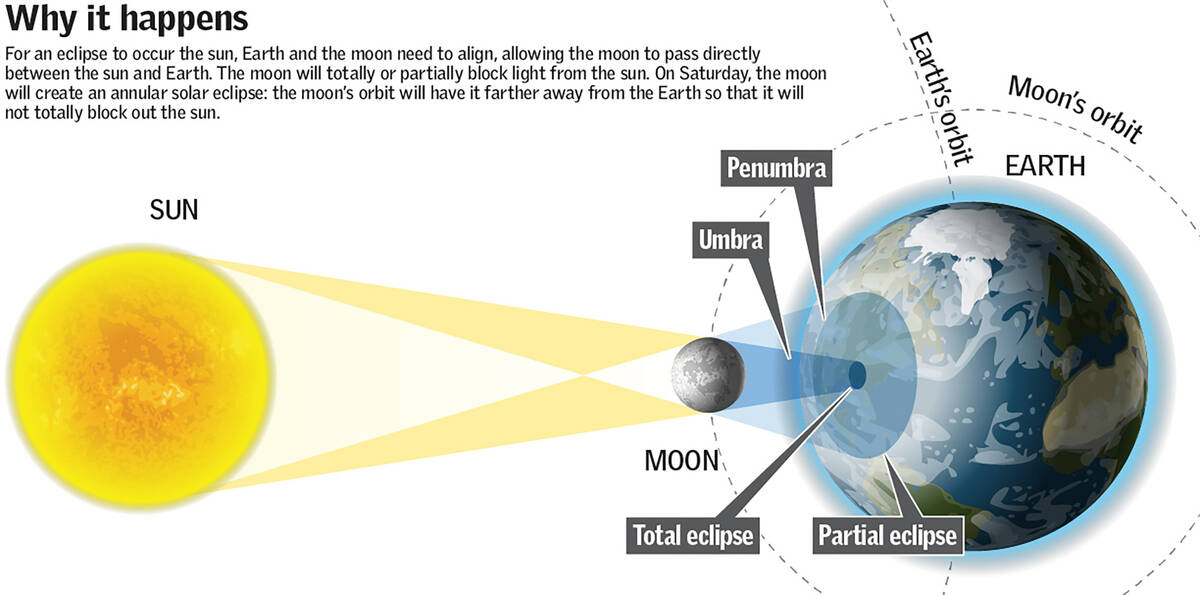How to view Saturday’s solar eclipse in Las Vegas
It won’t happen again for nearly another 25 years.
If you have Saturday morning free, you might want to find time to see the annular solar eclipse that will be partially visible from Las Vegas.
A solar eclipse is when the moon passes between Earth and the sun, thereby totally or partly obscuring the image of the sun for a viewer on Earth.
The eclipse will cross North, Central and South America. It will be visible in parts of the United States, Mexico and many countries in South and Central America, according to NASA.
The dazzling celestial event will allow millions of people to witness “the awe and the wonder of seeing a beautiful ring of fire eclipse,” Peg Luce, acting director of the Heliophysics Division at NASA headquarters, told CNN.
To see the total “ring of fire” you will have to drive a couple hundred miles north of Las Vegas to the Cedar City, Utah, area. Should you decide to stay in the valley, you will get about an 80 to 85 percent view of the eclipse.
In Las Vegas, a partial eclipse will start at 8:08 a.m. PDT, with the maximum darkness occurring at 9:26 a.m. and the sky returning to normal at 10:54 a.m for a total duration of 2 hours and 46 minutes.
The path in the U.S. starts on the Oregon coast near Eugene at 9:13 a.m. PDT and ends near Corpus Christi, Texas, at 12:03 p.m. CDT.
In southern Utah, the partial eclipse begins around 9:09 a.m. MDT with the full eclipse (annularity) starting at 10:26 a.m. and with maximum eclipse at 10:28 a.m. before the full eclipse ends at 10:31 a.m. and the sky returns to normal at 11:56 a.m.
At Brian Head Resort near Cedar City, visitors can view the eclipse while flanked by fall colors and Cedar Breaks National Monument. The resort’s elevation at 9,600 feet should provide clearer skies for improved viewing.
The total eclipse starts at 10:24 a.m. MDT, and the “ring of fire” duration will be about 4 minutes and 40 seconds.
How rare is it?
The next solar eclipse will be visible in Nevada on Aug. 12, 2045.
Several eclipses have occurred in the region in the past decade. Northern Nevada was in the path of annularity for a 2012 annular eclipse, and it was just south of the path of totality for a total eclipse in 2017.
How to view safely
The only safe way to look directly at the sun during an eclipse is through special-purpose solar filters, such as eclipse glasses or handheld solar viewers. And the only safe time to look at the sun without solar filters is during the two to four minutes of total eclipse, according to NASA.
Eclipse glasses have their safety certified by the International Organization for Standardization. You can tell if a pair of solar eclipse glasses meet today’s standards if they are labeled ISO 12312-2 (sometimes written as ISO 12312-2:2015), according to the National Park Service.
An alternative method for safely viewing the partially eclipsed sun is pin-hole projection.
Cross the outstretched, slightly open fingers of one hand over the outstretched, slightly open fingers of your other hand. With your back to the sun, look at your hands’ shadow on the ground. The little spaces between your fingers will project a grid of small images on the ground, showing the sun as a crescent during the partial phases of the eclipse.
Travel the night before
Because the eclipse is a morning event, it’s best to get to your destination early and try to spend eclipse night at or near your viewing location. Expect the highways and freeways to be extra busy afterward.
Check the local TV weather reports as eclipse day approaches. The meteorologists will give you great advice on viewing the eclipse and whether you may need to relocate. Consult eclipsophile.com for eclipse meteorology.
Check out your library
Many local libraries are getting involved with eclipse-themed events and kits, with some providing safety glasses.
Contact Marvin Clemons at mclemons@reviewjournal.com.



























